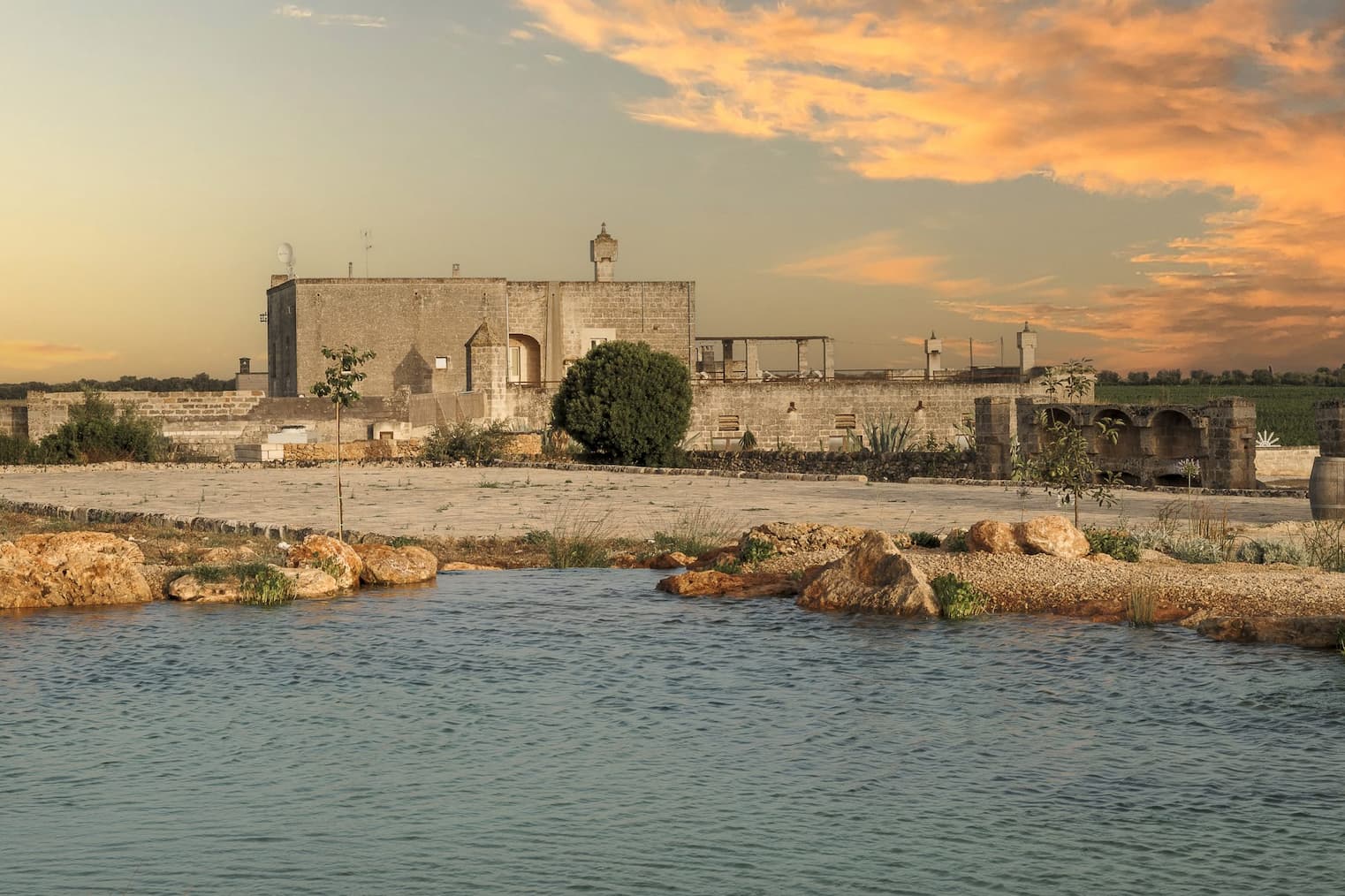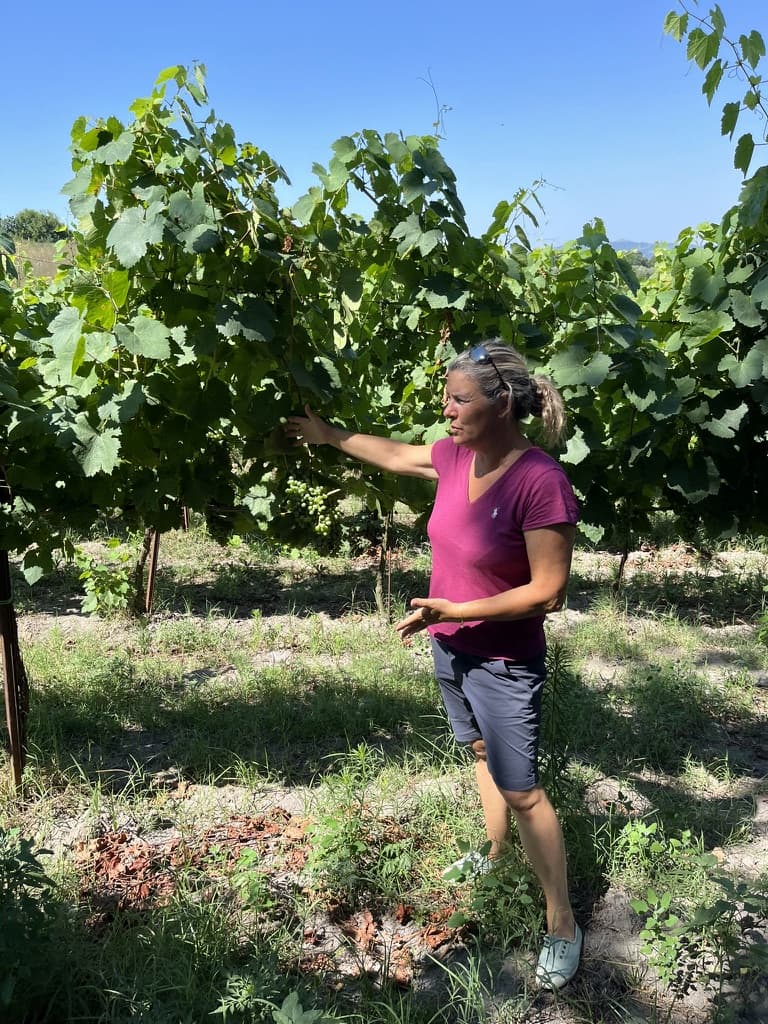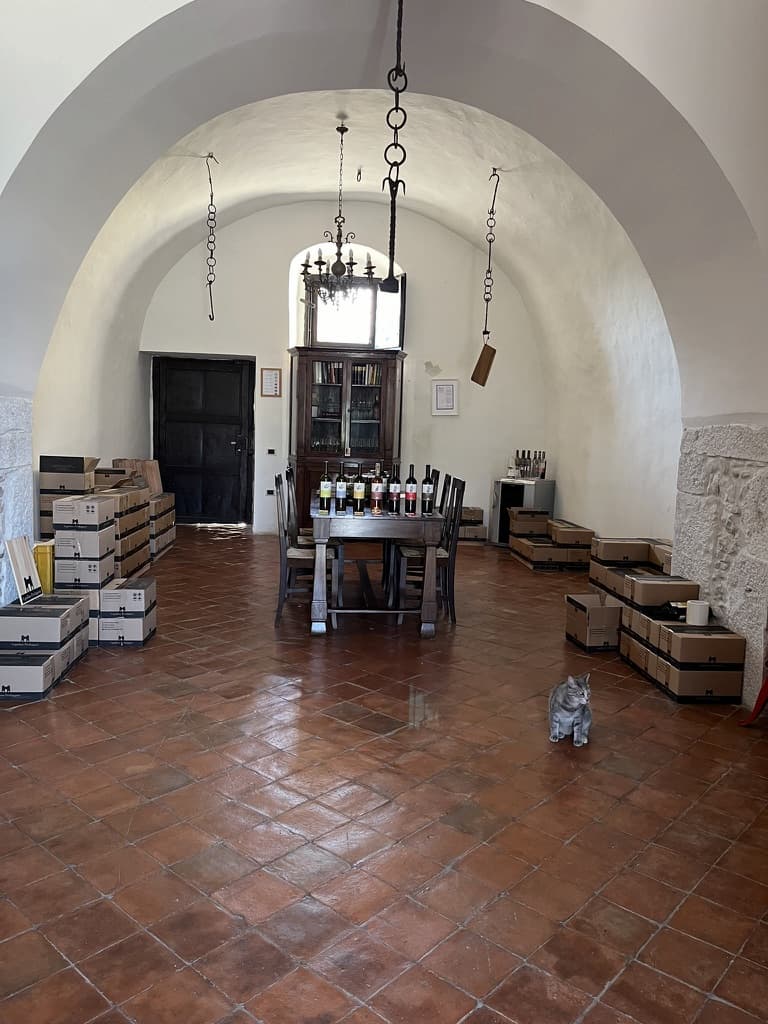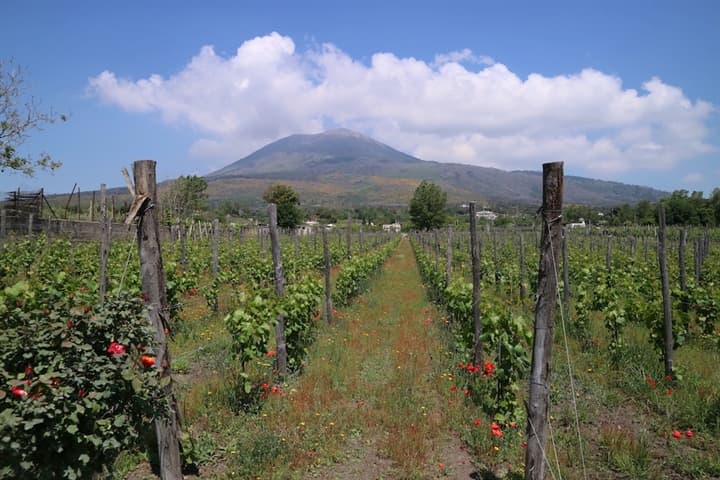✨ Discovering the Wines of Southern Italy: Puglia & Campania
Tucked away in Italy’s sun-soaked south, Puglia and Campania are two regions rich in history, culture, and vibrant wine traditions. Long appreciated by locals and savvy drinkers, they are now stepping into the global spotlight — offering wines that are both deeply rooted in tradition and full of fresh energy.
Puglia, forming the heel of Italy’s boot, stretches between the Adriatic and Ionian Seas. It’s a land of wide, open skies, ancient olive trees, and endless fields of grain. Historically known for producing bulk wine, Puglia is now being redefined by a new generation of producers who are embracing indigenous grapes, organic farming, and a renewed focus on quality over quantity. The region’s signature grape, Primitivo, is behind some of its most expressive reds — bold, generous wines often bursting with dark fruit and warmth. In the south, the Salento peninsula is home to Negroamaro, a variety that yields both structured reds and deeply coloured, characterful rosato. While red wine dominates, Puglia’s white varieties like Verdeca, Fiano Minutolo, and Bombino Bianco are gaining attention for their freshness and aromatic appeal.
Beyond the vines, Puglia’s landscape tells its own story: from ancient trulli dwellings and sun-bleached limestone villages to fertile plains dotted with almond trees and centuries-old olive groves. Its wines reflect this generous land — warm, honest, and full of rustic charm.
To the west, Campania is a region of contrasts — from the dramatic coastline of the Amalfi and the volcanic slopes of Mount Vesuvius, to the cool, mountainous heartland of Irpinia and Sannio. Here, ancient grapes like Aglianico, Fiano, and Greco are the foundation of wines with depth, structure, and elegance. Aglianico, often referred to as the “Barolo of the South,” shines particularly in Taurasi, where the grape reaches its most powerful, age-worthy expression. Campania’s whites are equally compelling: Fiano di Avellino and Greco di Tufo offer a beautiful balance of freshness, texture, and minerality — wines that are increasingly prized by sommeliers and collectors alike.
Campania’s wine story is deeply entwined with history. In ancient Pompeii, wine was so central to daily life that frescoes, amphorae, and even wine bars have been uncovered in volcanic ash. That legacy of craftsmanship and reverence for the vine continues today, with a growing number of producers championing local varieties, volcanic soils, and low-intervention techniques.

Masseria Cuturi - Puglia
In 1881, Tommaso Schiavoni Tafuri, a wealthy landowner from Manduria in Salento, Puglia, married Countess Sabini of Altamura. As part of her dowry, she brought Primitivo rooted cuttings — grafted vine stock — which were planted in the fertile Conca d’Oro on the Cuturi estate. This marked the beginning of some of the region’s earliest bush-trained Primitivo vines, producing a wine known for its richness, body, and alcohol — a true “nectar of the gods.”
The name Primitivo reflects the grape’s tendency to ripen earlier than other varieties. By the late 19th century, the Cuturi estate covered around 100 hectares of vines, carefully tended by a dedicated local community. Masseria Cuturi became known not only for quality but also for innovation, embracing winemaking technologies that earned them awards and recognition in the early 20th century.
By the time the current family arrived in 2007, the vineyards had disappeared. Determined to restore the estate’s legacy, they began an ambitious replanting project, and today Masseria Cuturi is once again home to 40 hectares of vineyards — a modern expression of its historic roots.
The Conca d’Oro, named for the richness of its soils, benefits from five artesian wells and two natural springs, making it a fertile and generous environment — a kind of agricultural Eden. The estate’s vineyards are situated in a single plot near the Ionian Sea, bordered by dry-stone walls and protected by the ancient Cuturi forest, a nature reserve that contributes to the area’s unique microclimate.
Within this setting, ancient Primitivo clones have been carefully replanted across diverse soil types — from dark, clay-rich plots to lighter marly and silty areas. These soils are deep and rich in organic matter. To ensure balance in the vineyard, cover crops are sown to oxygenate the roots and promote healthy, natural competition.
Masseria Cuturi practices certified organic viticulture, guided by a philosophy that respects both tradition and the land. But their sustainability commitment goes further. As they put it, natural sustainability must be rooted in economic and social sustainability, and they strive to align all choices with that principle.
The estate is certified by ICEA and is actively pursuing “Biodiversity Friend” status. Biodiversity is protected across all aspects of the farm. In the cellar, operations are powered by renewable energy, and the wines are bottled in lightweight glass using certified paper and corks made from renewable sugarcane-based materials.
Through this blend of legacy, innovation, and environmental integrity, Masseria Cuturi offers a compelling model of what thoughtful winemaking can look like in the 21st century.
The Wines
2024 Masseria Cuturi Fiano – $40
This organic Fiano offers bright straw-yellow hues with aromas of citrus fruits, Mediterranean herbs like thyme and wild herbs, and yellow plums. The palate is rich and fruity, with hints of salty Mediterranean notes, delivering a balanced and refreshing finish.
2024 Masseria Cuturi Negroamaro – $42The Zacinto Negroamaro presents a deep ruby red color with violet reflections. It boasts aromas of wild cherries, prunes, violets, and a touch of minerality. On the palate, it is round and persistent, featuring elegant tannins and a fresh, energetic finish.
Capolino Perlingieri - Campania
In 2003, at the age of thirty, Alexia Capolino Perlingieri left behind a career in investment banking in Milan to revive her family’s dormant winemaking tradition in Campania. The family had stepped away from winemaking in 1987, and with the world — and viticulture — having changed dramatically since then, Alexia essentially started from scratch. She purchased new land, replanted outdated vineyards, built a modern cellar, selected an oenologist who shared her vision, and worked side by side with vineyard staff to fully understand the land’s character and complexity.
Today, the Capolino Perlingieri estate in Sannio spans 12 hectares of vineyards and 5 hectares of olive groves, all farmed organically. The focus is on Campania’s indigenous grape varieties — a deliberate choice rooted in the belief that local identity is a strength, especially in a globalised world. Every wine and extra virgin olive oil is made solely from estate-grown fruit, allowing full control over quality and consistency.
Sannio, though just 45 miles from Naples, remains largely undiscovered and off the tourist trail. It’s a rural area with sweeping landscapes of vineyards and olive groves, shaped by a unique climate and geography. Framed by the extinct volcano Monte Taburno and the rugged Matese range, the Telesina Valley provides the ideal environment for both white and red grape varieties. The region’s winemaking heritage dates back to Roman times, when Sannio wine was widely consumed in ancient Rome via Pompeii’s trade routes.
The estate’s vineyards are located in Solopaca, between 300 and 1000 feet above sea level, and divided into two plots: Pozzillo, with sandy soils and good water availability, ideal for Falanghina and Sciascinoso; and Cesine, with compact clay soils suited to Greco, Fiano, and Aglianico. Vine training systems vary depending on site, using single or double Guyot with planting densities ranging from 3,300 to 6,500 vines per hectare.
The olive groves, spanning five hectares across Solopaca, Castelvenere, and Benevento, contain nearly 1,500 trees of typical Sannio varieties — Ortice, Ortolana, and Femminella — which are used to produce three distinct monocultivar extra virgin olive oils. These groves are maintained organically, without artificial irrigation, and pruned according to traditional methods.
For Alexia, organic farming is not a trend, but a farmer’s responsibility — an effort to maintain the plant’s balance within its ecosystem. She avoids synthetic chemicals and irrigation, allowing for healthier fruit and minimal intervention in the cellar. That said, the approach is not dogmatic: wines are filtered, selected yeasts are used, and minimal sulfites are added. The goal is authenticity — without extremism — and to produce wines that are clean, expressive, and true to place, without mistaking flaws for character.
The Wines
2022 Capolino Perlingieri Falanghina – $42The Preta Falanghina displays pale straw to light golden hues. Its aromatic bouquet includes white flowers, citrus fruits, and ripe orchard fruits like apple and peach. The palate is round and balanced, with fresh acidity and a persistent fruity taste.
2020 Capolino Perlingieri Greco – $44
The Vento Greco offers fresh aromas of sweet peach, citrus, and floral notes. It is medium-bodied with soft but fine acidity throughout, making it exceptionally food-friendly.
2021 Capolino Perlingieri Sciascinoso – $45
The Sciascì is a complex and bold red wine, opening with smoky leather and bitter tobacco aromas, followed by herbal undertones reminiscent of dried bay and violet. The palate delivers bright acidity and distinct grassy notes, culminating in a balanced and intriguing finish
Together, Puglia and Campania offer a rich and varied portrait of Southern Italy — regions where sun and soil, tradition and innovation come together to create wines with true soul. Whether you're discovering a structured Primitivo, a smoky Greco, or a bright Falanghina, these wines invite you to taste history, place, and passion in every glass.






